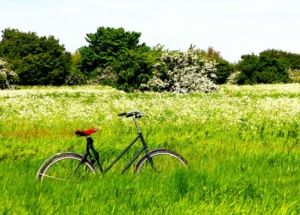News
Copenhagen 2021: Sex in the open air
This article is more than 4 years old.
Although Ørstedsparken is well known as a cruising spot, these days Amager Fælled is the best place to hook up

(photo: flickr/Guillaume Baviere)
For the past 40 years, Amager Fælled has been a meeting place for men looking for other men and casual sex.
Cruising around the forest, the communication starts with the eyes. If you look at someone else for a second too long, he knows the message, and if you are lucky, you get a smile back.
One party takes the initiative and slowly moves closer, and then the magic happens. Here you can get what you came for. And be on your way after. Without exchanging a single word.
Busy on sunny days
When the sun is shining, there can be up to 30 men in the area. However, attendance has been lower since dating apps like Grindr and Tinder made their intro.
Brian Capkan remembers the day he went to Amager Fælled for the first time.
A path led him into the woods and he did not know if he was in the right place until he suddenly came across a man with a bare backside.
He was shocked, but turned on. They ended up touching each other, and since that day he has been regularly coming to Amager Fælleden.
“In the bush the only important thing is chemistry,” says Brian, who likes how the parking lot is in front of the forest, ensuring he can enter the area discreetly.
No blind dates!
One of his friends cycles past the parking lot and catches his attention.
Ivan, 36, from Spain has just finished work and is taking a walk. He prefers cruising over Grindr, where people can pretend to be somebody else.
In the forest, there is no blind date element.
“You can start with someone, and if you do not like him, you can just turn around and find someone else,” says Ivan.
“No-one is gonna be mad at you or anything. Everyone is open and no-one is looking for a relationship.”
And no commitment
An anonymous gentleman of 42 is also attracted to the non-committal meeting set-up.
Like many frequenters of the park, he is in an open relationship, and when his boyfriend is on holiday, he comes out here to sunbathe.
While lying in the grass, a naked man comes walking from the forest edge. After long and intense eye contact, they move closer to each other and exchange a few seductive words.
They find a secluded spot in the grass, where they lie down on their towels. After half an hour of intimate sex in the open air, the meeting ends with a hug, and they go their separate ways.
For company too
Some find love though. A meeting in the park for Ivan, 72, who’s been coming here half his life, blossomed into a 25-year relationship.
Coming here is not just about sex for him. He comes to relax and lie in the sun with a book, surrounded by the excitement of the wandering men.
“You do not have such a strong drive with age, but you still need to be with someone physically: to feel each other’s bodies,” he says.
“Whether I ejaculate or not, it’s not so important.”
Suppressed desires
“Many heterosexual men with wives and children come here. Many!” says Thomas, 42.
His loud voice interrupts the silence of the forest. Several times he has been with someone who has ended the act with a comment such as: “Well, now I have to go home and cook for the children.”
”The goal for most people is to finish college, start work, find a woman, marry, get a couple of kids. But there are many people who do not fit into that,” concurs Ivan from Spain.
Many bisexuals suppress their homosexual side to fit in, he says, but they come here to ease the pressure.
“The heterosexuals are actually the best ones,” he says with a shy laugh. “There is something sexy about the fact that this person is straight.”
Attracts all types
Cruising is most often associated with Ørstedsparken, which is also a popular cruising spot in Copenhagen.
However, a few years back there were a number of assaults in the park. It made many afraid to continue going there.
“There may be prejudice that it is a particular type who comes to : somebody who can’t find anything else,” concludes Brian.
“But it attracts all types, and everyone cleans up after themselves!”
First published in 2018, republished here with the permission of outandabout.dk.










































